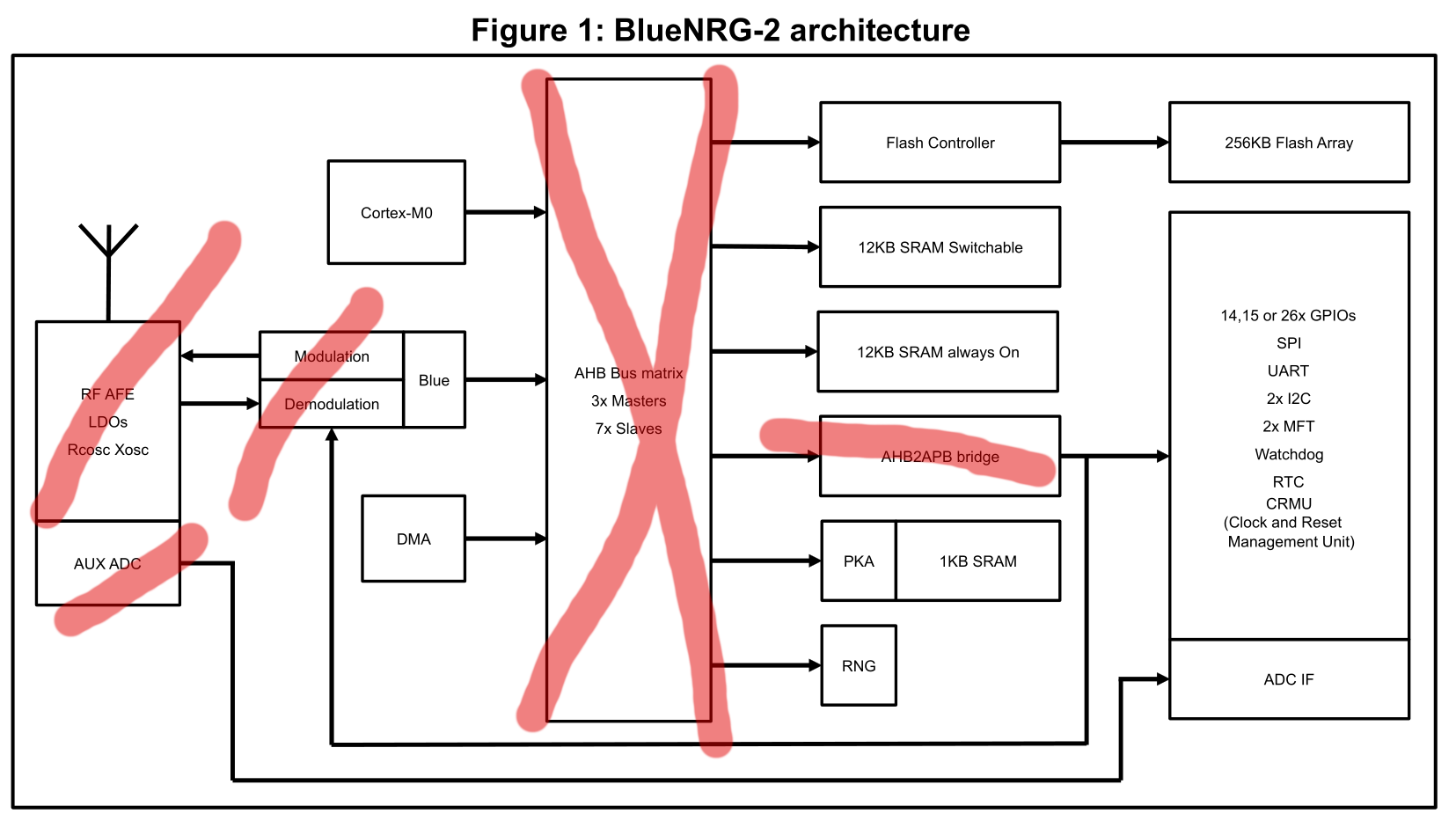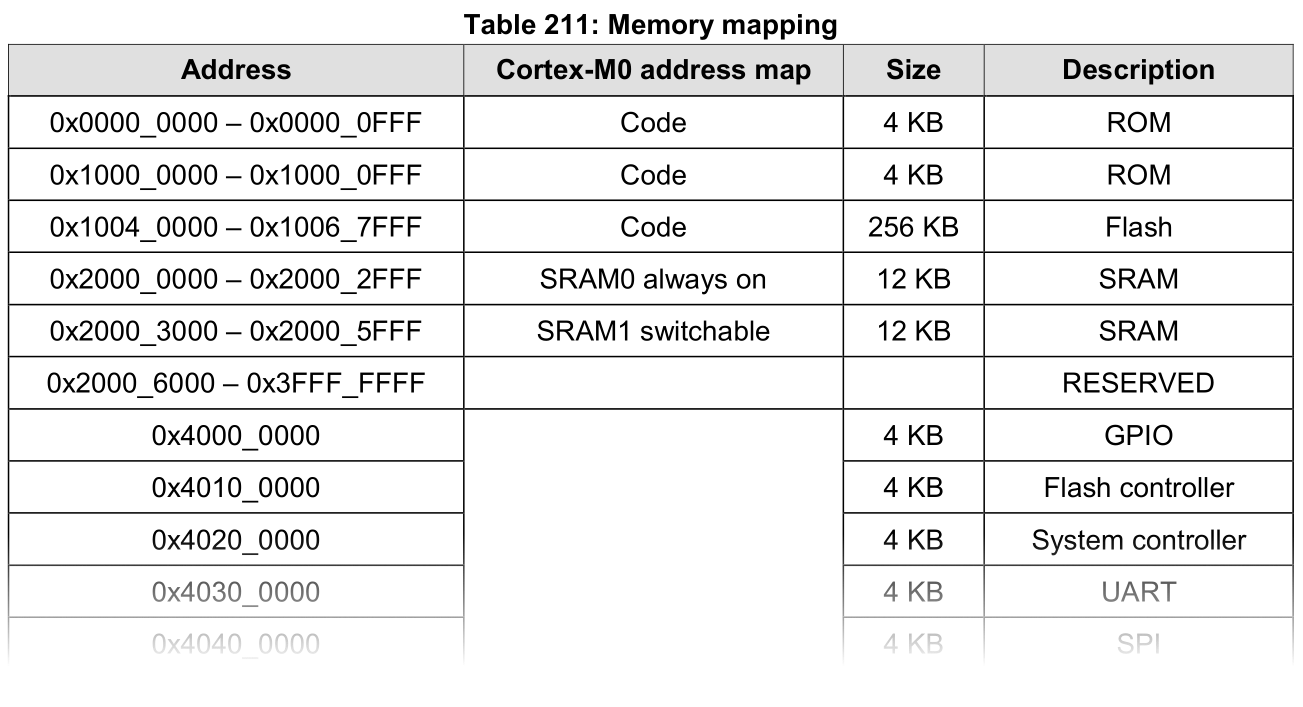Renode
I find it a useful tool. Maybe you will, too!
About Me: I Do Weird Hardware
- Simmel: Contact Tracing with Audio
- Chibitronics: Programming Stickers with Audio
- Novena: Open Source Laptop
- Senoko: Open Source Power Board for Novena
Hardware with Embedded Software
- Software needs to be written
- Software needs to be tested
- Software needs to be debugged
About Renode
- Whole-System Emulator
- Supports concurrent emulation
- Extensible with C# and Python
- Windows, Mac, Linux
- MIT Licensed
About This Talk
- Overview of Emulators
- Oevrview of Weird Hardware
- Cool things you can do
Who will find this interesting?
- Creators: Those making new boards or hardware
- Integrators: Running CI on firmware files
- Reverse Engineers: Understanding new hardware and firmware
Creators: Making New Things!
- Reusing an existing platform
- Reusing an existing microcontroller
- New microcontroller fron existing family
Integrators: Making Sure Nothing Broke!
- Hardware testing incompatible with cloud
- ...it sure is effective, though
- Hardware crunch makes it difficult to get hardware
- Downloading software is much cheaper than shipping
- Can run tests on every code push
Reverse Engineers: What Is This Blob Doing?
- Staring at code flow is enlightening, but time-consuming
- What is it doing and how does it get there?
- How can we make it do $x?
What is an Emulator?

What is an Emulator?

What is an Emulator?

Whole-System Emulator

Whole-System Emulator

Transparent Emulator
- WSL2/Docker
- qemu on Linux
- Rosetta on Mac
Renode Is Many of These
- Console: Able to present an interactive environment
- Transparent: Can run in CI via Robot commands
- Debugger: Has a GDB server built in
What is a Computer?

What is a Computer?
- A system of devices
- One or more CPU
- One or more buses
- One or more blocks of memory
- Some I/O
What is a Computer?

What is a Computer?

What is a Computer?

What is a Computer?

What is a Computer?

What is a Computer?

What is a Computer?

What is a Computer?

Defining a Computer in Renode
flash: Memory.MappedMemory @ sysbus 0x00000000
size: 0x00008000
sram: Memory.MappedMemory @ sysbus 0x20000000
size: 0x00001000
nvic: IRQControllers.NVIC @ sysbus 0xE000E000
IRQ -> cpu@0
cpu: CPU.CortexM @ sysbus
nvic: nvic
cpuType: "cortex-m0+"
PerformanceInMips: 24
That's Nice, but What About...
- Loading firmware?
- Adding peripherals?
What is "Firmware"?
Firmware is a series of instructions executed by the CPU in order to accomplish a task
Firmware is Memory
Loading Firmware in Renode
sysbus LoadELF @firmware.elf
sysbus LoadBinary @rom.bin 0x20000000
sysbus LoadSymbolsFrom @rom.elf
How does Renode Interact With $VENDOR_TOOL?
- Hopefully your vendor tool produces ELF files
- At the end of the day, it's all bytes. Just use
LoadBinary!
What About Boot ROMs?
- Initialize peripherals
- Check for boot override
- Check for low-power state
- Load firmware into RAM
- Validate firmware
- Jump to loaded program
sysbus.cpu VectorTableOffset 0x20000000
sysbus.cpu PC 0x20000c00
What about New Peripherals?
It's All About Small Victories
- Serial ports are super rewarding
- They're also usually simple!
- They are easy to script
What is a Register?


What is a Register?

What is a Register?

Reuse an Existing Block!
flash: Memory.MappedMemory @ sysbus 0x00000000
size: 0x00008000
sram: Memory.MappedMemory @ sysbus 0x20000000
size: 0x00001000
nvic: IRQControllers.NVIC @ sysbus 0xE000E000
IRQ -> cpu@0
// 👇 Add a UART with IRQ #10 at address 0x40300000
uart: UART.PL011 @ sysbus 0x40300000
-> nvic@10
cpu: CPU.CortexM @ sysbus
nvic: nvic
cpuType: "cortex-m0+"
PerformanceInMips: 24
Output Success!

Always Check for Block Reuse
Blocks are frequently reused across designs, and can save you from having to reimplement everything from scratch!Steps to Set Up a Serial Port
- Enable peripheral
- Set up clock
- Mux GPIOs
- Calculate baud rate
- Write to UART TX register
Steps to Set Up a Serial Port
- Interrupt Support
- Handled as a GPIO within the peripheral
- DMA
- Handled as a different peripheral
Example Serial Port
//
// Copyright (c) 2010-2018 Antmicro
//
// This file is licensed under the MIT License.
// Full license text is available in 'licenses/MIT.txt'.
//
using System.Collections.Generic;
using Antmicro.Renode.Peripherals.Bus;
using Antmicro.Renode.Core.Structure.Registers;
using Antmicro.Renode.Core;
using Antmicro.Renode.Logging;
namespace Antmicro.Renode.Peripherals.UART
{
public class LiteX_UART : UARTBase, IDoubleWordPeripheral, IBytePeripheral, IKnownSize
{
public LiteX_UART(Machine machine) : base(machine)
{
IRQ = new GPIO();
var registersMap = new Dictionary
{
{(long)Registers.RxTx, new DoubleWordRegister(this)
.WithValueField(0, 8,
writeCallback: (_, value) =>
this.TransmitCharacter((byte)value),
valueProviderCallback: _ => {
if(!TryGetCharacter(out var character))
{
this.Log(LogLevel.Warning, "Empty Rx FIFO.");
}
return character;
})
},
{(long)Registers.TxFull, new DoubleWordRegister(this)
.WithFlag(0, FieldMode.Read) //tx is never full
},
{(long)Registers.RxEmpty, new DoubleWordRegister(this)
.WithFlag(0, FieldMode.Read, valueProviderCallback: _ => Count == 0)
},
{(long)Registers.EventPending, new DoubleWordRegister(this)
// `txEventPending` implements `WriteOneToClear` semantics to avoid fake warnings
// `txEventPending` is generated on the falling edge of TxFull; in our case it means never
.WithFlag(0, FieldMode.Read | FieldMode.WriteOneToClear, valueProviderCallback: _ => false, name: "txEventPending")
.WithFlag(1, out rxEventPending, FieldMode.Read | FieldMode.WriteOneToClear, name: "rxEventPending")
.WithWriteCallback((_, __) => UpdateInterrupts())
},
{(long)Registers.EventEnable, new DoubleWordRegister(this)
.WithFlag(0, name: "txEventEnabled")
.WithFlag(1, out rxEventEnabled)
.WithWriteCallback((_, __) => UpdateInterrupts())
},
};
registers = new DoubleWordRegisterCollection(this, registersMap);
}
public uint ReadDoubleWord(long offset)
{
return registers.Read(offset);
}
public byte ReadByte(long offset)
{
if(offset % 4 != 0)
{
// in the current configuration, only the lowest byte
// contains a meaningful data
return 0;
}
return (byte)ReadDoubleWord(offset);
}
public override void Reset()
{
base.Reset();
registers.Reset();
UpdateInterrupts();
}
public void WriteDoubleWord(long offset, uint value)
{
registers.Write(offset, value);
}
public void WriteByte(long offset, byte value)
{
if(offset % 4 != 0)
{
// in the current configuration, only the lowest byte
// contains a meaningful data
return;
}
WriteDoubleWord(offset, value);
}
public long Size => 0x100;
public GPIO IRQ { get; private set; }
public override Bits StopBits => Bits.One;
public override Parity ParityBit => Parity.None;
public override uint BaudRate => 115200;
protected override void CharWritten()
{
UpdateInterrupts();
}
protected override void QueueEmptied()
{
UpdateInterrupts();
}
private void UpdateInterrupts()
{
// rxEventPending is latched
rxEventPending.Value = (Count != 0);
// tx fifo is never full, so `txEventPending` is always false
var eventPending = (rxEventEnabled.Value && rxEventPending.Value);
IRQ.Set(eventPending);
}
private IFlagRegisterField rxEventEnabled;
private IFlagRegisterField rxEventPending;
private readonly DoubleWordRegisterCollection registers;
private enum Registers : long
{
RxTx = 0x0,
TxFull = 0x04,
RxEmpty = 0x08,
EventStatus = 0x0c,
EventPending = 0x10,
EventEnable = 0x14,
}
}
}
Steps to Set Up a Serial Port

What about Missing Definitions?
- Most registers are unused
- Start/Stop bits
- One-wire mode
- Infrared mode
- Most writes can be ignored
Advantages of Emulation

Advantages of Emulation

Robot Framework: Running Tests in CI
*** Settings ***
Suite Setup Setup
Suite Teardown Teardown
Test Setup Reset Emulation
Test Teardown Test Teardown
Resource ${RENODEKEYWORDS}
*** Variables ***
${UART} sysbus.uart0
${URI} @https://dl.antmicro.com/projects/renode
${LIS2DS12}= SEPARATOR=
... """ ${\n}
... using "platforms/cpus/nrf52840.repl" ${\n}
... ${\n}
... lis2ds12: Sensors.LIS2DS12 @ twi1 0x1c ${\n}
... ${SPACE*4}IRQ -> gpio0@28 ${\n}
... """
*** Keywords ***
Create Machine
Execute Command mach create
Execute Command machine
... LoadPlatformDescriptionFromString ${LIS2DS12}
Execute Command sysbus LoadELF
... ${URI}/nrf52840--zephyr_lis2dh.elf-s_747800-163b7e7cc986d4b1115f06b5f3df44ed0defc1fa
*** Test Cases ***
Should Read Acceleration
Create Machine
Create Terminal Tester ${UART}
Execute Command sysbus.twi1.lis2ds12 AccelerationX 10
Execute Command sysbus.twi1.lis2ds12 AccelerationY 5
Execute Command sysbus.twi1.lis2ds12 AccelerationZ -5
Start Emulation
Wait For Line On Uart
... x 9.997213 , y 4.997410 , z -4.999803
Renode for Reverse Engineering
SVD: Standard Chip Documentation
STMicroelectronics
ST
BlueNRG2
BlueNRG1
1.0.0
ARM 32-bit Cortex-M0 Microcontroller based device, CPU clock up to 32MHz
License
CM0
r0p0
little
false
false
2
false
8
32
32
read-write
0x00000000
0xFFFFFFFF
RNG
1.0
RNG
RNG
0xB0000000
32
read-write
0
0x1000
registers
CR
RNG configuration register
0x00
32
read-write
0x00000000
0x0000FFFF
DIS
Set the state of the random number generator.<ul><li>0: RNG is enable.</li><li>1: RNG is disabled. The internal free-running oscillators are put in power-down mode and the RNG clock is stopped at the input of the block.</li></ul>
2
1
read-write
SR
RNG status register
0x04
32
read-only
0x00000000
0x0000FFFF
RDY
New random value ready.<ul><li>0: The RNG_VAL register value is not yet valid. If performing a read access to VAL, the host will be put on hold (by wait-states insertion on the AHB bus) until a random value is available.</li><li>1: The VAL register contains a valid random number.</li></ul>This bit remains at 0 when the RNG is disabled (RNGDIS bit = 1b in CR)
0
1
read-only
VAL
RNG 16 bit random value
0x08
32
read-only
0x00000000
0x0000FFFF
SVD: Using with Renode
sysbus ApplySVD @BlueNRG2.svd

Logging Memory Accesses

Debugging with GDB


Creating ELF Files

Multi-System Emulation

Multi-System Emulation
